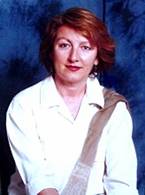Article
of the Month
Strategies for avoiding burnout in hospice and palliative medicine: peer advice for physicians on achieving longevity and fulfillment
Swetz KM, et al.
Journal of Palliative Medicine 2009 Vol. 12, N. 9: 773-777
Burnout encompasses three areas: feeling of emotional exhaustion, cynicism or depersonalization, and a low sense of personal accomplishment. Burnout has been described by general physicians as well as oncologist and other sub-specialitists. However, the people at most risk of burnout are those who come into contact with death, dying and suffering.
The authors carried out a qualitative online survey of 40 hospice and palliative medicine physicians (28 males and 12 females) working in the USA and selected from the membership directory of the American Academy of Hospice and Palliative Medicine website and the editorial board of the Journal of Palliative Medicine . The physicians were questioned about their strategies for avoiding burnout by means of an electronic multiquestion, single-answer, survey that attempted to identify common topics. Two investigators reviewed responses for common thematic classes.
Thirty-one physicians answered the questions. The strategies considered important in preventing burnout were reported and placed in 1 of 13 thematic classes (physical well-being, personal relationships, professional relationships, clinical variety, hobbies, personal boundaries, transcendental, time away, talking with others, passion for one’s work, realistic expectations, remembering patients, humor and laughter).
The most frequent percentages of strategies reported were the following: physical well-being (60%), professional relationships (57%), taking a transcendental perspective (43%), talking with others (43%), hobbies (40%), clinical variety (37%), personal relationship (37%) and personal boundaries (37%).
Why I chose this article
This is one of the few qualitative studies performed to help us understand how hospice and palliative medicine physicians use various strategies to avoid and prevent burnout and maintain an adequate work-life balance.
These data could be helpful to a team to detect early signs and symptoms of burnout in their colleagues
Reviewed by Dr. Carla Ripamonti. Dr. Ripamonti is an IAHPC Board Member, to learn more about her go to: http://www.hospicecare.com/Bio/c_ripamonti.htm
|

